Screen media activity and brain structure in youth: Evidence for diverse structural correlation networks from the ABCD study
- PMID: 30339913
- PMCID: PMC6487868
- DOI: 10.1016/j.neuroimage.2018.10.040
Screen media activity and brain structure in youth: Evidence for diverse structural correlation networks from the ABCD study
Abstract
The adolescent brain undergoes profound structural changes which is influenced by many factors. Screen media activity (SMA; e.g., watching television or videos, playing video games, or using social media) is a common recreational activity in children and adolescents; however, its effect on brain structure is not well understood. A multivariate approach with the first cross-sectional data release from the Adolescent Brain Cognitive Development (ABCD) study was used to test the maturational coupling hypothesis, i.e. the notion that coordinated patterns of structural change related to specific behaviors. Moreover, the utility of this approach was tested by determining the association between these structural correlation networks and psychopathology or cognition. ABCD participants with usable structural imaging and SMA data (N = 4277 of 4524) were subjected to a Group Factor Analysis (GFA) to identify latent variables that relate SMA to cortical thickness, sulcal depth, and gray matter volume. Subject scores from these latent variables were used in generalized linear mixed-effect models to investigate associations between SMA and internalizing and externalizing psychopathology, as well as fluid and crystalized intelligence. Four SMA-related GFAs explained 37% of the variance between SMA and structural brain indices. SMA-related GFAs correlated with brain areas that support homologous functions. Some but not all SMA-related factors corresponded with higher externalizing (Cohen's d effect size (ES) 0.06-0.1) but not internalizing psychopathology and lower crystalized (ES: 0.08-0.1) and fluid intelligence (ES: 0.04-0.09). Taken together, these findings support the notion of SMA related maturational coupling or structural correlation networks in the brain and provides evidence that individual differences of these networks have mixed consequences for psychopathology and cognitive performance.
Copyright © 2018 Elsevier Inc. All rights reserved.
Conflict of interest statement
Conflict of Interest: The authors have no conflicts of interest to declare.
Figures
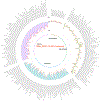
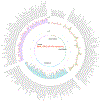
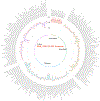
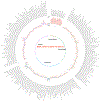
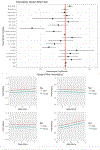
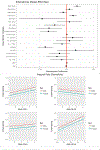
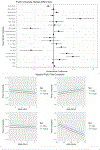

Similar articles
-
Screen media activity does not displace other recreational activities among 9-10 year-old youth: a cross-sectional ABCD study®.BMC Public Health. 2020 Nov 25;20(1):1783. doi: 10.1186/s12889-020-09894-w. BMC Public Health. 2020. PMID: 33238925 Free PMC article.
-
Brain structural covariation linked to screen media activity and externalizing behaviors in children.J Behav Addict. 2022 Jun 30;11(2):417-426. doi: 10.1556/2006.2022.00044. Print 2022 Jul 13. J Behav Addict. 2022. PMID: 35895476 Free PMC article.
-
Brain structural co-development is associated with internalizing symptoms two years later in the ABCD cohort.J Behav Addict. 2023 Mar 20;12(1):80-93. doi: 10.1556/2006.2023.00006. Print 2023 Mar 30. J Behav Addict. 2023. PMID: 36940096 Free PMC article.
-
Adolescent brain cognitive development (ABCD) study: Overview of substance use assessment methods.Dev Cogn Neurosci. 2018 Aug;32:80-96. doi: 10.1016/j.dcn.2018.02.007. Epub 2018 Feb 21. Dev Cogn Neurosci. 2018. PMID: 29559216 Free PMC article. Review.
-
Approaching Retention within the ABCD Study.Dev Cogn Neurosci. 2018 Aug;32:130-137. doi: 10.1016/j.dcn.2017.11.004. Epub 2017 Nov 11. Dev Cogn Neurosci. 2018. PMID: 29150307 Free PMC article. Review.
Cited by
-
Screen Time and Attention Subdomains in Children Aged 6 to 10 Years.Children (Basel). 2022 Sep 15;9(9):1393. doi: 10.3390/children9091393. Children (Basel). 2022. PMID: 36138702 Free PMC article.
-
Passive Sensing of Preteens' Smartphone Use: An Adolescent Brain Cognitive Development (ABCD) Cohort Substudy.JMIR Ment Health. 2021 Oct 18;8(10):e29426. doi: 10.2196/29426. JMIR Ment Health. 2021. PMID: 34661541 Free PMC article.
-
Digital Media and Developing Brains: Concerns and Opportunities.Curr Addict Rep. 2024;11(2):287-298. doi: 10.1007/s40429-024-00545-3. Epub 2024 Mar 4. Curr Addict Rep. 2024. PMID: 38606363 Free PMC article. Review.
-
Prospective association of screen time with binge-eating disorder among adolescents in the United States: The mediating role of depression.Int J Eat Disord. 2024 May;57(5):1192-1201. doi: 10.1002/eat.24169. Epub 2024 Feb 15. Int J Eat Disord. 2024. PMID: 38358046 Free PMC article.
-
Imaging body-mind crosstalk in young adults.Int J Clin Health Psychol. 2024 Jul-Sep;24(3):100498. doi: 10.1016/j.ijchp.2024.100498. Epub 2024 Sep 7. Int J Clin Health Psychol. 2024. PMID: 39290876 Free PMC article.
References
-
- 2010. R: A Language and Environment for Statistical Computing R Foundation for Statistical Computing, Vienna, Austria.
-
- Achenbach TM, 2009. The Achenbach System of Emprically Based Assessment (ASEBA): Development, Findings, Theory and Applications University of Vermong Research Center for Children, Youth, and Families, Burlington, VT.
-
- Altbacker A, Plozer E, Darnai G, Perlaki G, Horvath R, Orsi G, Nagy SA, Bogner P, Schwarcz A, Kovacs N, Komoly S, Clemens Z, Janszky J, 2016. Problematic internet use is associated with structural alterations in the brain reward system in females. Brain Imaging Behav 10, 953–959. - PubMed
Publication types
MeSH terms
Grants and funding
- U24 DA041147/DA/NIDA NIH HHS/United States
- U01 DA051039/DA/NIDA NIH HHS/United States
- U01 DA041120/DA/NIDA NIH HHS/United States
- U01 DA041093/DA/NIDA NIH HHS/United States
- U24 DA041123/DA/NIDA NIH HHS/United States
- K12 DA000357/DA/NIDA NIH HHS/United States
- U01 DA041089/DA/NIDA NIH HHS/United States
- U01 DA041106/DA/NIDA NIH HHS/United States
- U01 DA041117/DA/NIDA NIH HHS/United States
- U01 DA041148/DA/NIDA NIH HHS/United States
- U01 DA041174/DA/NIDA NIH HHS/United States
- U01 DA041134/DA/NIDA NIH HHS/United States
- K23 AA025399/AA/NIAAA NIH HHS/United States
- U01 DA041022/DA/NIDA NIH HHS/United States
- U01 DA041156/DA/NIDA NIH HHS/United States
- KL2 TR001444/TR/NCATS NIH HHS/United States
- U01 DA041025/DA/NIDA NIH HHS/United States
- U01 DA050989/DA/NIDA NIH HHS/United States
- U01 DA041028/DA/NIDA NIH HHS/United States
- U01 DA041048/DA/NIDA NIH HHS/United States
LinkOut - more resources
Full Text Sources
Medical

